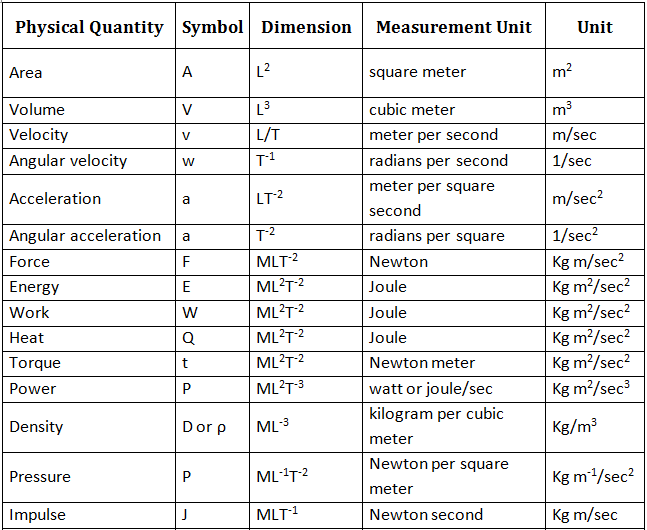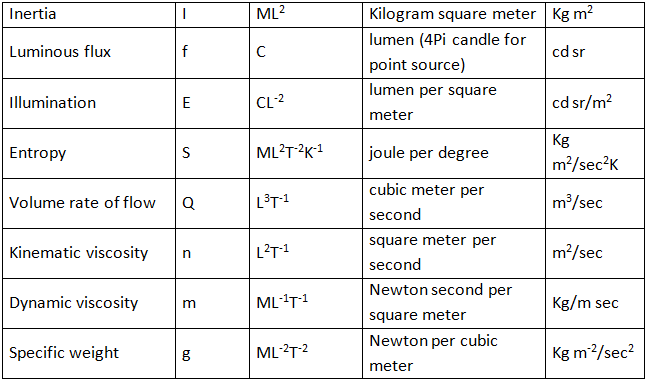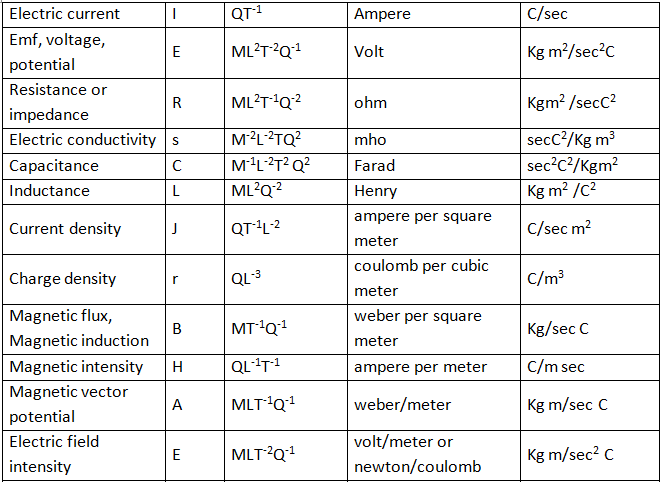NEET Exam > NEET Notes > NCERT Exemplar & Revision Notes for NEET > Revision Notes: Units & Dimensions
Units & Measurement Class 11 Notes Physics Chapter 1
In order to make the measurement of a physical quantity we have, first of all, to evolve a standard for that measurement so that different measurements of the same physical quantity can be expressed relative to each other. That standard is called a unit of that physical quantity.
- System of Units
(a) C.G.S (Centimeter-Grand-Second) system.
(b) F.P.S. (Foot-Pound-Second) system.
(c) M.K.S. (Meter-Kilogram--Second) system.
(d) M.K.S.A. (Meter-Kilogram-Second-Ampere) unit. - Dimensional Formula
The dimensional formula of a physical quantity is the formula that tells us how and which of the fundamental units have been used for the measurement of that quantity. - How to write dimensions of physical quantities
(a) Write the formula for that quantity, with the quantity on L.H.S. of the equation.
(b) Convert all the quantities on R.H.S. into the fundamental quantities mass, length and time.
(c) Substitute M, L, and T for mass, length, and time respectively.
(d) Collect terms of M, L, and T and find their resultant powers (a,b,c) which give the dimensions of the quantity in mass, length, and time respectively. - Characteristics of Dimensions
(a) Dimensions of a physical quantity are independent of the system of units.
(b) Quantities having similar dimensions can be added to or subtracted from each other.
(c) Dimensions of a physical quantity can be obtained from its units and vice-versa.
(d) Two different physical quantities may have the same dimensions.
(e) Multiplication/division of dimensions of two physical quantities (may be same or different) results in the production of dimensions of a third quantity.

- Mechanical Physical Quantities (derived)


- Electrical Physical Quantities (derived)


- Principle of Homogeneity
It states that “ the dimensional formulae of every term on the two sides of a correct relation must be same.” - Types of Error
(a) Constant errors: An error is said to be a constant error if it affects, every time, a measurement in a similar manner.
(b) Systematic errors: Errors which come into existence by virtue of a definite rule, are called systematic errors.
(c) Random error or accidental error: Error that takes place in a random manner and cannot be associated with a systematic cause are called random or accidental errors.
(d) Absolute error:
(e) Relative Error:
(f) Percentage Error:
The document Units & Measurement Class 11 Notes Physics Chapter 1 is a part of the NEET Course NCERT Exemplar & Revision Notes for NEET.
All you need of NEET at this link: NEET
FAQs on Units & Measurement Class 11 Notes Physics Chapter 1
| 1. What are units and dimensions in the context of JEE? |  |
Ans. Units and dimensions refer to the measurement and classification of physical quantities in JEE (Joint Entrance Examination). Units represent the standard used to express a quantity, while dimensions describe the type of quantity being measured, such as length, mass, or time.
| 2. How are units and dimensions relevant to JEE preparation? |  |
Ans. Understanding units and dimensions is crucial for JEE preparation as it helps in solving problems related to various topics in physics, such as mechanics, thermodynamics, and electromagnetism. It allows students to analyze and manipulate physical equations and derive meaningful relationships between different quantities.
| 3. Can you provide an example of how units and dimensions are used in JEE questions? |  |
Ans. Sure! For example, in a JEE question involving projectile motion, the dimensions of time, distance, and acceleration are used to analyze the motion of the projectile. By considering the units and dimensions of these quantities, students can determine the correct equations to solve the problem.
| 4. How can one improve their understanding of units and dimensions for JEE? |  |
Ans. To improve understanding, students can practice solving a variety of problems that involve units and dimensions. They should familiarize themselves with common units and their conversions, as well as the dimensions associated with different physical quantities. Additionally, studying relevant theory and concepts can help in developing a strong foundation.
| 5. Are there any specific strategies or tips for tackling units and dimensions questions in JEE? |  |
Ans. Yes, some strategies include carefully reading the question to identify the relevant quantities and their units, using dimensional analysis to check the correctness of equations, and practicing unit conversions regularly. It is also important to understand the fundamental dimensions and their combinations to simplify complex equations.
Related Searches

















